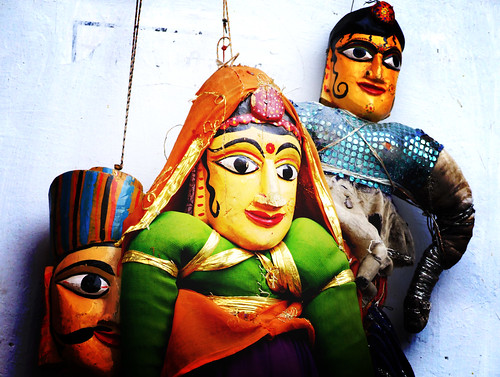I just read a Bangalore newspaper headline announcing that the government would take stern action against pubs that discriminate against African nationals. Good for the Chief Minister who said this in no uncertain terms.
Racism, prejudice and xenophobia are rampant in India. It’s a strange mixture of prejudice, ignorance and centuries-old discriminatory practices, when communities kept to themselves and there were dining taboos based on caste. You couldn’t eat with people not of your caste or marry into their communities.

Photo by judepics under a CC licence.
India is always a mystery, a country which is so huge that practices from Kashmir to Kanyakumari are as different from each other as Scotland is from Greece or Russia. Each state is like a different country with diverse languages, cuisines, clothes, customs, climate. Punjabis are closer in terms of their food and language to Pakistanis than to Tamils.
Advert
All these differences made people fairly suspicious of those who were not like them. And ‘people like us’ closed ranks and bonded. These closed communities are naturally full of prejudices towards the other, the outsider. Every state considers itself superior. This phenomenon is global, like Polish, Italian jokes in America. Or English, Irish, Welsh, Scottish jokes in the UK. We stereotype each other mercilessly and there are jokes galore about food, clothes and accents (how residents of each state speak English, actually!).
There’s a huge North-South divide too. Yet, in pre-colonial times, India was a haven for persecuted people. We gave refuge to Jewish people, Parsis from Persia, Armenians and later Chinese who ran away from the Revolution, and Tibetans who fled the Chinese. These people kept their distinct, separate identities but they prospered and loved India.
There’s another side to us though. As migration takes place, across state borders within India, a kind of xenophobia begins. In Mumbai in the 1960s, Maharashtrians were incited by Enoch Powell- like politicians to drive out south Indians, Madrasis, they called them, (somewhat similar to calling people Pakis in the UK), who were stealing their jobs, claimed the rabble rousers.
Sounds familiar? Recently, the same paranoid party called for North Indians to be thrown out. Many poor, migrant Biharis were beaten up, attacked and threatened as they went about their daily grind, often working for a pittance. In Bangalore there are rumblings of resentment over north Indian techies who have flooded the city with their loud, noisy, in-your-face manners. South Indians are relatively quiet, stand in queues and can’t understand the chaos of a northern railway station, a bit like Sicilians versus North Italians.
In the 1970s, when I used to visit Rome often, I found Italians warm and friendly. In the last decade that has changed. The racism towards Africans shocked me. I also discovered hordes of Bangladeshi flower sellers being rudely shooed away by Italians waiting for the traffic lights to turn green. I wondered how could things change so quickly, from warm, friendly to hostile ‘they’re swamping us with their alien culture.’
In Bangalore a bunch of Nigerians were picked up for drug peddling. The hostility is because of this perhaps. But there’s no getting away from Indian racism. In the heart of Mumbai, there’s a Nigerian ghetto. Ghettos are born because a minority feels it can find safety in numbers. The environment outside the ghetto is not warm or welcoming to Africans by and large. Students from North East India are mostly dubbed ‘chinky’. People ask them if they are Japanese, Chinese or Korean. There is total ignorance in most parts of India about the culture, indeed about anything North Eastern.
Advert
Men all over India drool over porn at their home computers and in internet cafes around the country. So it could be dangerous for a white, blonde woman to walk alone at night, too many men have been fantasizing about her. They stereotype white women as easy.
Indians rarely perceive beauty in black or far-eastern women. In fact, most Indians look for pale-skinned brides for their sons. Bridal ads ask for ‘fair skinned’ girls. So skin colour is important and you can’t be beautiful if you are not fair. Prospective bride seekers swarm into the girl’s house to ‘see the bride’. They have no compunction about saying, in front of the bride and her family, ‘she’s too black, we don’t want black grandchildren.’ Sensitivity, tact or even basic good manners are not common among average Indian families. They’d be genuinely astonished if you called them gross or uncouth.
When I see the Africans, Bangladeshis and Punjabis in Italy and Germany, they look miserable and unhappy. They hate the cold. They know they are despised. They are there to escape the poverty of their countries. Who would choose to leave home, family, the security of your own environment to run away illegally to an alien, hostile land? It’s exactly the same in India with migrant communities who come in thousands now, from Bihar, West Bengal, Jharkhand to the south because wages there are much higher.
In both cases, the solution is to improve conditions in the home country, the home state. But obviously that’s another story.






